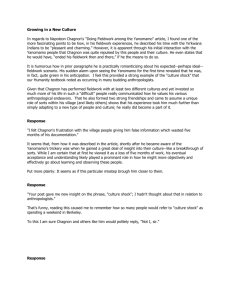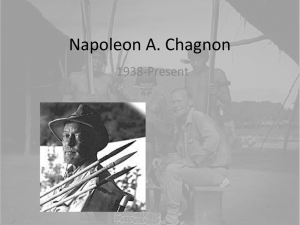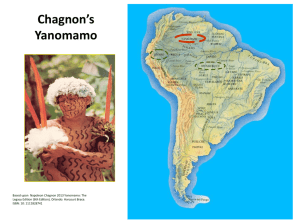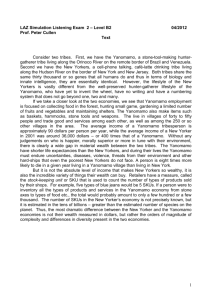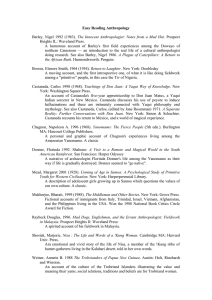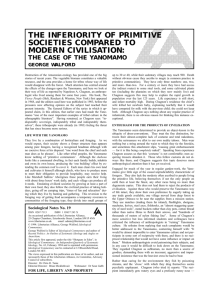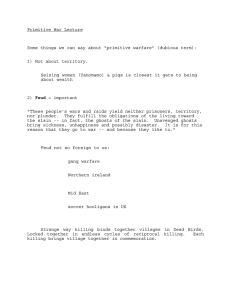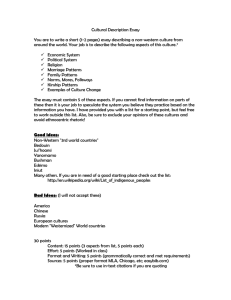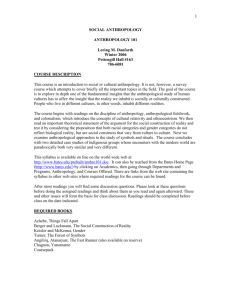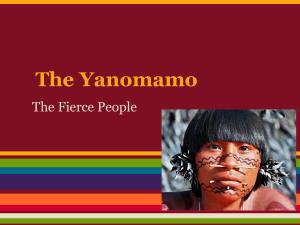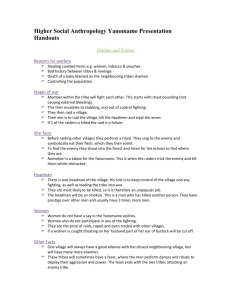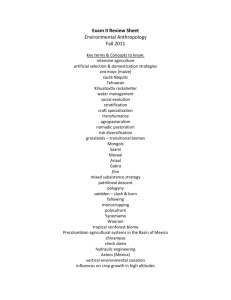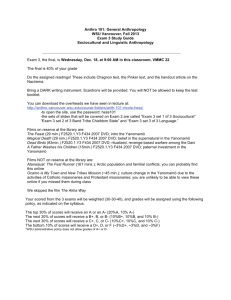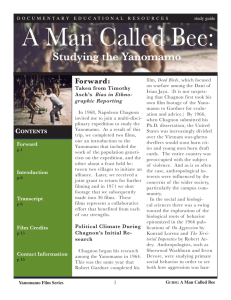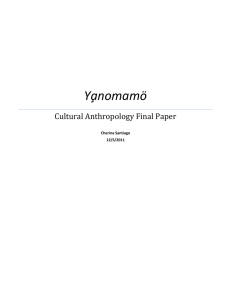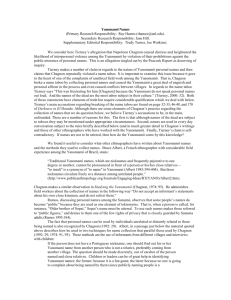Unit Three, Section Three Doing Fieldwork Among the Yanomamö
advertisement
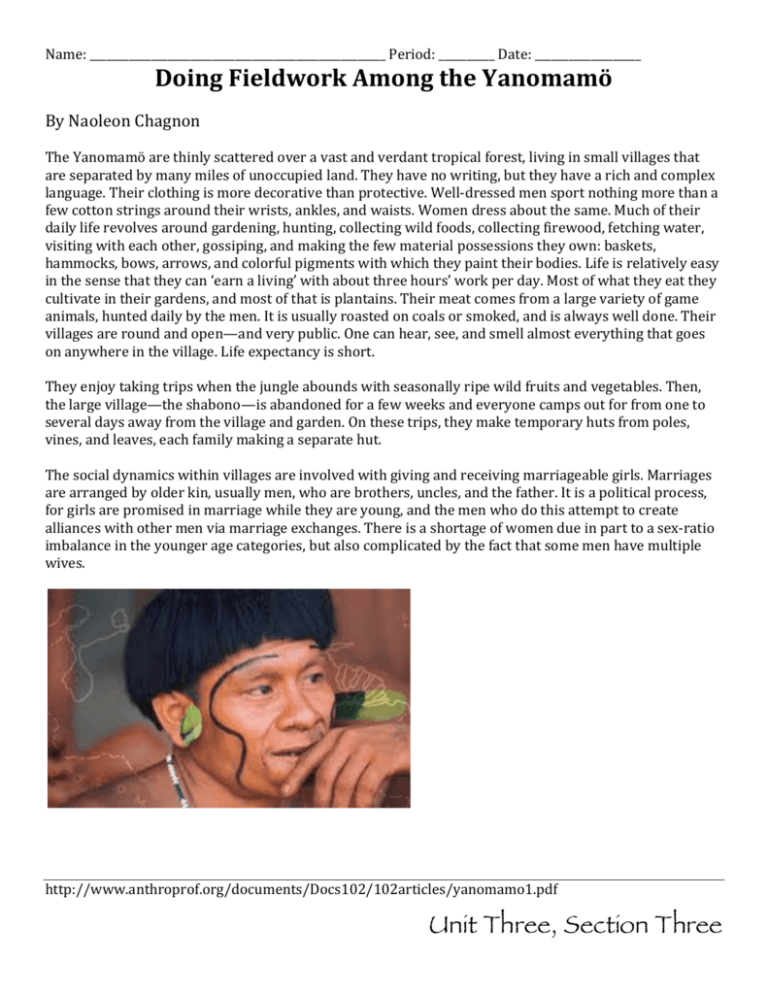
Name: _____________________________________________________ Period: __________ Date: ___________________ Doing Fieldwork Among the Yanomamö By Naoleon Chagnon The Yanomamö are thinly scattered over a vast and verdant tropical forest, living in small villages that are separated by many miles of unoccupied land. They have no writing, but they have a rich and complex language. Their clothing is more decorative than protective. Well-­‐dressed men sport nothing more than a few cotton strings around their wrists, ankles, and waists. Women dress about the same. Much of their daily life revolves around gardening, hunting, collecting wild foods, collecting firewood, fetching water, visiting with each other, gossiping, and making the few material possessions they own: baskets, hammocks, bows, arrows, and colorful pigments with which they paint their bodies. Life is relatively easy in the sense that they can ‘earn a living’ with about three hours’ work per day. Most of what they eat they cultivate in their gardens, and most of that is plantains. Their meat comes from a large variety of game animals, hunted daily by the men. It is usually roasted on coals or smoked, and is always well done. Their villages are round and open—and very public. One can hear, see, and smell almost everything that goes on anywhere in the village. Life expectancy is short. They enjoy taking trips when the jungle abounds with seasonally ripe wild fruits and vegetables. Then, the large village—the shabono—is abandoned for a few weeks and everyone camps out for from one to several days away from the village and garden. On these trips, they make temporary huts from poles, vines, and leaves, each family making a separate hut. The social dynamics within villages are involved with giving and receiving marriageable girls. Marriages are arranged by older kin, usually men, who are brothers, uncles, and the father. It is a political process, for girls are promised in marriage while they are young, and the men who do this attempt to create alliances with other men via marriage exchanges. There is a shortage of women due in part to a sex-­‐ratio imbalance in the younger age categories, but also complicated by the fact that some men have multiple wives. http://www.anthroprof.org/documents/Docs102/102articles/yanomamo1.pdf Unit Three, Section Three Name: _____________________________________________________ Period: __________ Date: ___________________ Global Sociology Confronting the Yanomamo: The Experience of Culture Shock 1. What is an anthropologist (use a dictionary if you do not know)? ____________________________________________ _________________________________________________________________________________________________________________________ 2. How can you describe the Yanomamo? _________________________________________________________________________ _________________________________________________________________________________________________________________________ 3. Where do they live? ______________________________________________________________________________________________ 4. What do they wear? _______________________________________________________________________________________________ _________________________________________________________________________________________________________________________ 5. How could you describe the environment in which the Yanomamo live in? _________________________________ _________________________________________________________________________________________________________________________ 6. How could you categorize Napoleon Chagnon’s impression of the Yanomamo? ____________________________ _________________________________________________________________________________________________________________________ Extensions 1. If you were Chagnon would you continue to stay with the Yanomamo and study them? Why or why not? ___________________________________________________________________________________________________________________ _________________________________________________________________________________________________________________________ 2. What would be some advantages and disadvantages of living like the Yanomamo? _____________________ _________________________________________________________________________________________________________________________ _________________________________________________________________________________________________________________________ 3. From this brief description, would you consider the Yamomamo to be civilized? Explain. _________________________________________________________________________________________________________________________ _________________________________________________________________________________________________________________________ Unit Three, Section Three
